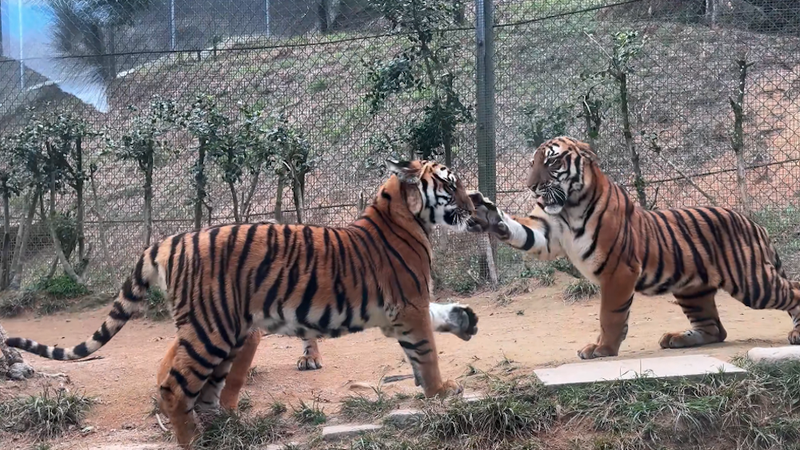Under the emerald canopy of the Meihua Mountains Nature Reserve in Longyan, southeast China's Fujian Province, pairs of tigers occasionally approach one another and gently slap paws – an encounter that looks fierce but, experts say, masks a surprisingly social ritual.
'Tigers are solitary and fiercely territorial in the wild due to competition for resources,' explains Jiang Guangshun, deputy director of the National Forestry and Grassland Administration's Feline Research Center. Yet in this protected haven, these big cats have developed a unique way to connect without resorting to full-blown combat.
Wildlife researchers have recorded these slaps to better understand how tigers test strength, establish hierarchies, and even relieve stress. Far from a simple fight, each paw swipe serves as a nonverbal handshake – a quick exchange that reveals size, speed, and confidence in just a few dramatic seconds.
For young global citizens and wildlife fans, this behavior offers a fresh perspective on a species often known only for its solitary might. Data-driven studies at reserves like Meihua are reshaping our view of tigers as versatile communicators, capable of balancing ferocity with subtle social cues.
As conservation efforts ramp up across G20 nations, understanding these interactions becomes more than a curiosity: it is a vital piece of the puzzle in protecting tigers worldwide. By decoding the language of slaps, researchers and changemakers can design smarter strategies to uphold habitat health, boost prey populations, and support sustainable coexistence.
Whether you are a tech-savvy entrepreneur or a digital nomad planning your next eco-journey, the story of the tiger slap shines a light on how science, policy, and curiosity can come together to preserve our planet's most iconic species.
Reference(s):
Playful tigers or fierce rivals? Understanding tigers 'slap' behavior
cgtn.com




